Related Research Articles

Jean Maurice Eugène Clément Cocteau was a French poet, playwright, novelist, designer, filmmaker, visual artist and critic. He was one of the foremost creatives of the surrealist, avant-garde, and Dadaist movements; and one of the most influential figures in early 20th-century art as a whole. The National Observer suggested that, “of the artistic generation whose daring gave birth to Twentieth Century Art, Cocteau came closest to being a Renaissance man.”
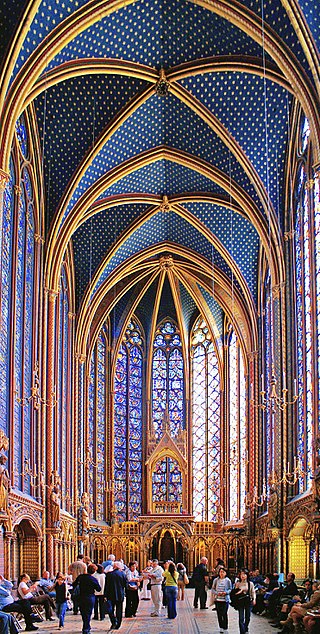
The Sainte-Chapelle is a royal chapel in the Gothic style, within the medieval Palais de la Cité, the residence of the Kings of France until the 14th century, on the Île de la Cité in the River Seine in Paris, France.
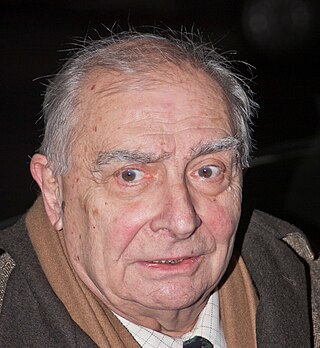
Claude Henri Jean Chabrol was a French film director and a member of the French New Wave group of filmmakers who first came to prominence at the end of the 1950s. Like his colleagues and contemporaries Jean-Luc Godard, François Truffaut, Éric Rohmer and Jacques Rivette, Chabrol was a critic for the influential film magazine Cahiers du cinéma before beginning his career as a film maker.
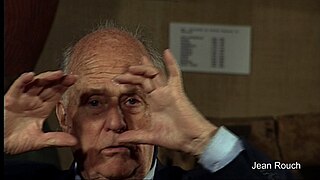
Jean Rouch was a French filmmaker and anthropologist.
Claude Jutra was a Canadian actor, film director, and screenwriter.

Jean Eustache was a French filmmaker. During his short career, he completed numerous short films, in addition to a pair of highly regarded features, of which the first, The Mother and the Whore, is considered a key work of post-Nouvelle Vague French cinema.
The Prix Jean Vigo is an award in the Cinema of France given annually since 1951 to a French film director in homage to Jean Vigo. It was founded by French writer Claude Aveline. Since 1960, the award is given to a director of a feature film and to a director of a short film.
Jean Pierre Lefebvre is a Canadian filmmaker. He is widely admired as "the godfather of independent Canadian cinema," particularly among young, independent filmmakers.
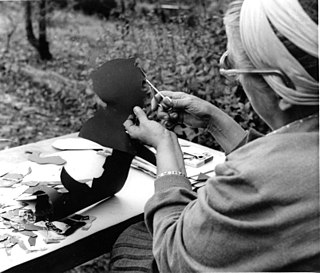
Silhouette animation is animation in which the characters are only visible as black silhouettes. This is usually accomplished by backlighting articulated cardboard cut-outs, though other methods exist. It is partially inspired by, but for a number of reasons technically distinct from, shadow play.
Jean-Claude Labrecque, was a director and cinematographer who learned the basics of filmmaking at the National Film Board of Canada.

François de Roubaix was a French film score composer. In a decade, he created a musical style with new sounds, until his accidental death at 36.

Roger Viry-Babel, saw himself as an entertainer, academic and French filmmaker. Pioneer of audiovisual teaching at the University of Nancy II and at its European film institute (IECA), he spent his life bringing together his love of teaching, cinema and the history of his region (Lorraine).
Pierre Perrault was a Québécois documentary film director. He directed 20 films between 1963 and 1996. He was one of the most important filmmakers in Canada, although largely unknown outside of Québec. In 1994 he was awarded the Prix Albert-Tessier. Pour la suite du monde (1963), The Times That Are (1967), and The River Schooners (1968) make up his critically acclaimed L'Isle-aux-Coudres Trilogy. His film La bête lumineuse (1982) screened in the Un Certain Regard section of the 36th Cannes Film Festival.
Jean Aurenche was a French screenwriter. During his career, he wrote 80 films for directors such as René Clément, Bertrand Tavernier, Marcel Carné, Jean Delannoy and Claude Autant-Lara. He is often associated with the screenwriter Pierre Bost, with whom he had a fertile partnership from 1940 to 1975.
The chapelle royale was the musical establishment attached to the royal chapel of the French kings. The term may also be applied to the chapel buildings, the Chapelle royale de Versailles.
Cinema of the Democratic Republic of the Congo (DRC) originated with educational and propaganda films during the colonial era of the Belgian Congo. Development of a local film industry after the Democratic Republic of the Congo became independent in 1960 was handicapped by constant civil war.

Îlot Saint-Michel is an uninhabited island in the English Channel off the coast of Brittany in Côtes-d'Armor, France, near the resort of Sables-d'Or-les-Pins. It is part of the commune of Erquy and is accessible by foot during low tide.
Sébastien Kamba, is a Congolese filmmaker. One of the pioneer filmmakers in Congolese film industry, he has directed short films with the collaboration with French filmmakers.
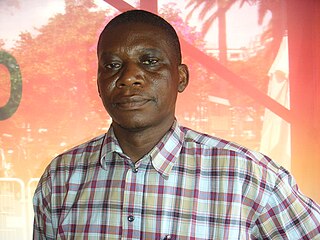
Jean-Michel Kibushi Ndjate Wooto, is a Congolese stop-motion animator. He is the pioneer of African animation, and widely considered to be the first Congolese animator.
References
- 1 2 3 Roy Armes (2008). "Tchissoukou, Jean-Michel". Dictionary of African Filmmakers. Indiana University Press. p. 124. ISBN 0-253-35116-2.
- ↑ Bruno Okokana, Cinéma: La Chapelle de Jean-Michel Tchissoukou, projetée au Centre culturel russe, Agence d'Information d'Afrique Centrale, 3 March 2018.
- 1 2 Jean-Michel Tchissoukou, trigon-film.org.